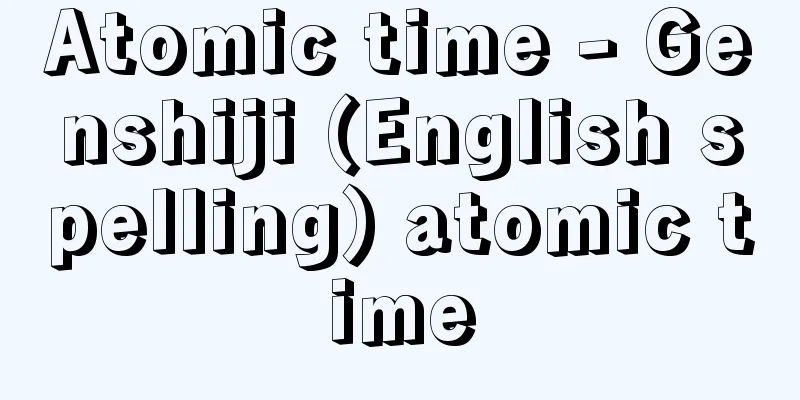Atomic time - Genshiji (English spelling) atomic time

|
It is usually abbreviated as AT. Atoms of an element are each in their own unique, discontinuous energy state, and when they move from one state to another, they release or absorb vibrational energy of a unique frequency. The frequency of vibrations emitted by these atoms is very stable compared to the frequency of artificial vibrators. Therefore, the infinitesimal time between one atomic vibration is also constant. Taking advantage of this property of atoms, the infinitesimal time of one vibration emitted by a stable atomic vibration oscillator is integrated to define it as one second, and a clock that continues this indefinitely is made, which is called an atomic clock, and the time shown by this clock is called atomic time, or accumulated atomic time. The International Atomic Time adopted is the time interval of 9,192,631,770 Hz of radiation corresponding to the transition between two hyperfine levels in the ground state of the cesium atom 133 Cs, with one second as the time unit, and was decided at the 13th General Conference on Weights and Measures in Paris in 1967. The atomic time currently adopted was set at 0:00 UTC on January 1, 1958. Although atomic clocks are extremely precise, they do not always agree perfectly, so the International Bureau of Time combines the atomic times set by atomic clocks around the world to determine the International Atomic Time. Atomic time is a time system based on the principles of quantum mechanics, while ephemeral time is a time system based on the principles of celestial mechanics. [Toshio Watanabe] Source: Shogakukan Encyclopedia Nipponica About Encyclopedia Nipponica Information | Legend |
|
普通ATと略記する。元素の原子はそれぞれ固有の不連続なエネルギー状態にあり、一つの状態から他の状態に移るとき、固有の振動数の振動エネルギーを放出、または吸収する。この原子が出す振動数は人工の振動体の振動数に比して非常に安定している。したがって原子の1振動間の極微時間も定常である。原子のこの性質を利用して、定常安定な原子振動発振器の発する1振動の極微時間を積分して1秒と定義し、これを永続的に継続する時計をつくり、これを原子時計とし、この時計が示す時刻を原子時、または積算原子時という。 国際原子時として採用されているのは、セシウム原子133Csの基底状態における二つの超微細構造準位間の遷移に対応する放射の91億9263万1770ヘルツの時間間隔を時間単位の1秒とするもので、1967年パリの第13回国際度量衡総会で決定された。原子時は1958年1月1日世界時0時を原子時0時として出発したものが、現在採用されている。原子時計はきわめて精密ではあるが、完全には時刻が一致しないため国際報時局が世界各地の原子時計の示す原子時を総合して国際原子時を決める。原子時は量子力学の原理に基づく時系であり、暦表時は天体力学の原理に基づく時系である。 [渡辺敏夫] 出典 小学館 日本大百科全書(ニッポニカ)日本大百科全書(ニッポニカ)について 情報 | 凡例 |
<<: Prehistoric times - Genshijidai
Recommend
Phrenology - Phrenology
The idea that a person's personality and othe...
"Kakuichibon" - Kakuichibon
…Nyoichi and his disciple Akashi Kakuichi (?-1371...
Orgasm
…In women, the condition is one in which there is...
Horseshoe kidney
A congenital abnormality in which the left and rig...
Scatophagidae
...A general term for insects belonging to the fa...
Panofsky
German-born American Jewish art historian. Born in...
National Land Use Planning Act
The Land Use Planning and Regulation Law, No. 92 ...
Private prostitute
A prostitute who operates without official permis...
Wig - wig
A deciduous tall tree of the family Cercidiphyllu...
Carigiet, A. (English spelling) CarigietA
...In East Germany, there was Werner Klemke, who ...
Taxonomy - taxonomy
A branch of biology. If we distinguish between the...
Exercise - Sports
〘noun〙① Something moving around. An object changin...
Ferrous Acetate - Ferrous Acetate
Iron acetate with oxidation state II and iron acet...
Fujisaki [town] - Fujisaki
A town in the southern part of the Tsugaru Plain, ...
Habomai Islands
An archipelago off the coast of Hokkaido's Nem...









